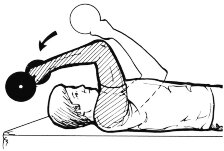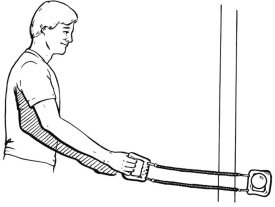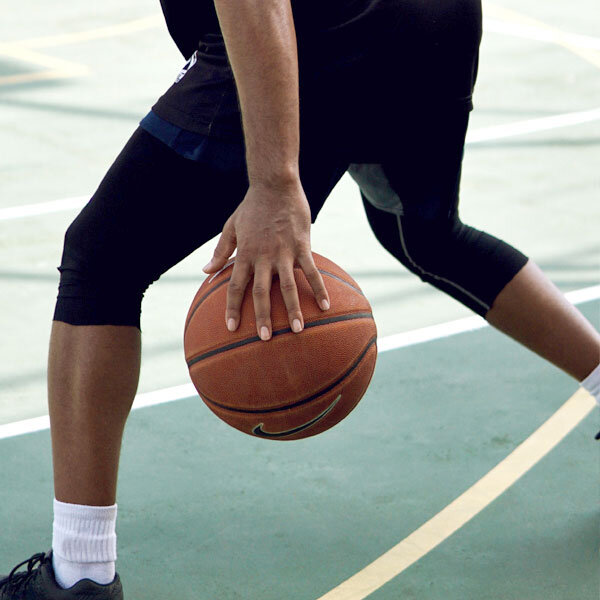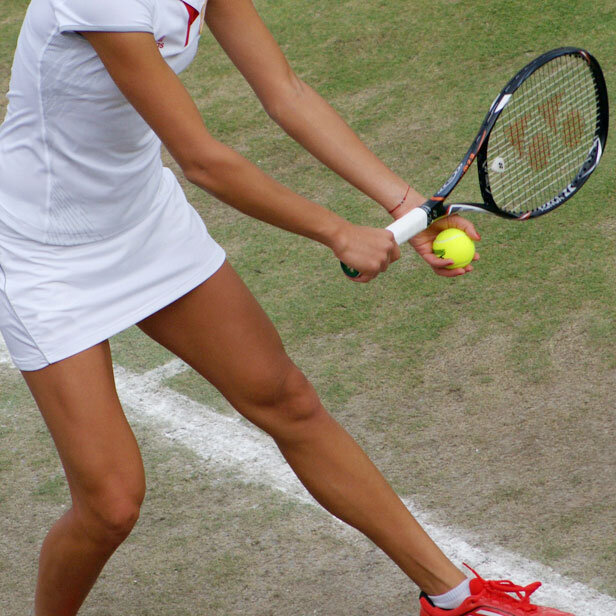POST OPERATIVE INSTRUCTIONS
SHOULDER STRENGTHENING
Phase I: Shoulder Strengthening
These exercises should be performed daily, or as directed by your physical therapist and all performed in one block consisting of 3 sets of 10 repetitions.
The key to success is progression through addition of resistance (weight) to compensate for progressive gains in strength. The substantial gains in strength desired may take an extended period of time to attain. Usually six to eight weeks on a daily exercise program will be the necessary period of time. The exercises must be continued after this period of daily exercise to maintain the strength levels that you have gained. If you discontinue the exercise you may rapidly lose the strength you have developed, so continue with the program at least on an every other day basis. Exercise daily for six weeks, then exercise every other day as long as you continue to be physically active.
1. STRENGTHENING SHOULDER EXERCISES
Lay flat on your back without a pillow under the head (Fig. 1). Use the power of your good arm to elevate the affected arm with your elbow flexed, extending the elbow as you bring your arm over your head. Then lower your arm, slowly bringing it down by the side in a steady rhythm as your arm descends between 90° of elevation and 0°. It is in this arc that gravity will try to accelerate your arm movement. Prevention of this acceleration results in strengthening of the muscle by eccentric lengthening. Rest a few moments and repeat the exercise. Work towards repeating the exercise 10 times before proceeding. When you can perform this exercise, unassisted from beginning to end with good control, for 10 repetitions twice daily, then you may lift it by itself while still laying on your back.
Figure 1 Phase I Strengthening: This exercise is performed while lying supine to minimize the effect of gravity thereby diminishing the weight of the arm.
2. STRENGTHENING ROTATOR CUFF AND ELEVATORS
Once you can do the 1st exercise, add a 0.5-lb weight as shown (Fig. 2). Lift the weight overhead and slowly back down by the side 10 times in a smooth fashion. When 10 repetitions can be performed without pain and without the assistance of your good arm twice daily, increase the weight by .5-lb. Remember, at least 3 days should be spent at each weight level.
Figure 2 Phase I Strengthening
Phase II: Shoulder Strengthening
These exercises are designed to strengthen the external rotators and elevators of your shoulder. They should be performed in sets of ten, twice a day. Hold the position for at least 5 seconds.
1. STRENGTHENING ELEVATORS AGAINST GRAVITY
You may begin this exercise once you can perform Phase I exercise #2 with a 3-lb weight. Stands or sit and use the power of your normal arm to lift your weak arm straight overhead. USE NO WEIGHTS. (Fig.1). Release your weak arm and balance overhead with active muscle control. Slowly flex the elbow as the arm descends in the elevation plane while preventing any acceleration as the arm is lowered. When you’ve lowered your arm down to your side, rest for a few moments. Do not attempt to lift the weak arm by itself. Repeat 10 times, twice daily.
Figure 1 Phase II Strengthening: The arm is passively elevated against gravity while the descent phase is active. This results in eccentric strengthening of the muscles.
2. STRENGTHENING ROTATOR CUFF ELEVATORS
Once you can do exercise #1 smoothly 10 times, add a 0.5-lb weight increments to the weak arm but use the normal arm to lift the weight as shown in Fig. 2. Then remove the normal arm and lower the weak arm by itself. When you can lower 3 to 5 pounds with good control, then you may lift the weak arm by itself. Once you are able to bring 5 to 6 pounds down to your side without acceleration 10 times, your may begin the Phase III strengthening program.
Figure 2 Phase II Strengthening
Phase III: Shoulder Strengthening
These exercises are designed to strengthen the external rotators and elevators of your shoulder. They should be performed in sets of ten, twice a day. Hold the position for at least 5 seconds.
1. ANTERIOR DELTOID
Strengthening of the anterior deltoid is performed as shown (Fig. 1). Face away from the door as shown. Keep the elbow bent at 90° and push forward. The elastic element is pulled forward approximately 45°. Hold it there for 5 seconds and slowly release.
Figure 1 Phase III strengthening of the anterior deltoid muscle.
2. POSTERIOR DELTOID
The posterior deltoid is strengthened similarly by facing the door (Fig. 2). Face toward the door and preset the tension with arm out in front of you. Pull back with your arm about 45° away from your body.
Figure 2 Phase III strengthening of the posterior deltoid muscle.
3. MIDDLE DELTOID
Strengthening of the middle deltoid is best performed in front of a mirror to be certain that symmetry is maintained. Hold the spring or elastic as shown. Simultaneously bring the elbows away from your side while keeping the arms symmetric. It is not important that the angular excursion exceed 45° as shown in the figure (Fig. 3).
Figure 3 Phase III strengthening of the middle deltoid muscle.
4. INTERNAL ROTATORS
Strengthening of the middle deltoid is best performed in front of a mirror to be certain that symmetry is maintained. Hold the spring or elastic as shown. Simultaneously bring the elbows away from your side while keeping the arms symmetric. It is not important that the angular excursion exceed 45° as shown in the figure (Fig. 3).
Figure 4 Phase III strengthening of the internal rotators of the shoulder.
5. EXTERNAL ROTATORS
External rotators are strengthened in a very similar fashion with the patient facing the opposite direction relative to the door handle (Fig 5). Hold the elbow bent at 90°. Rotate your arm and hand out away from your chest but continue to keep the elbow at your side as shown in fig. 5.
Figure 5 Phase III strengthening of the external rotators of the shoulder.
Dr. McAllister's Orthopedic and Sports Medicine Areas of Speciality













